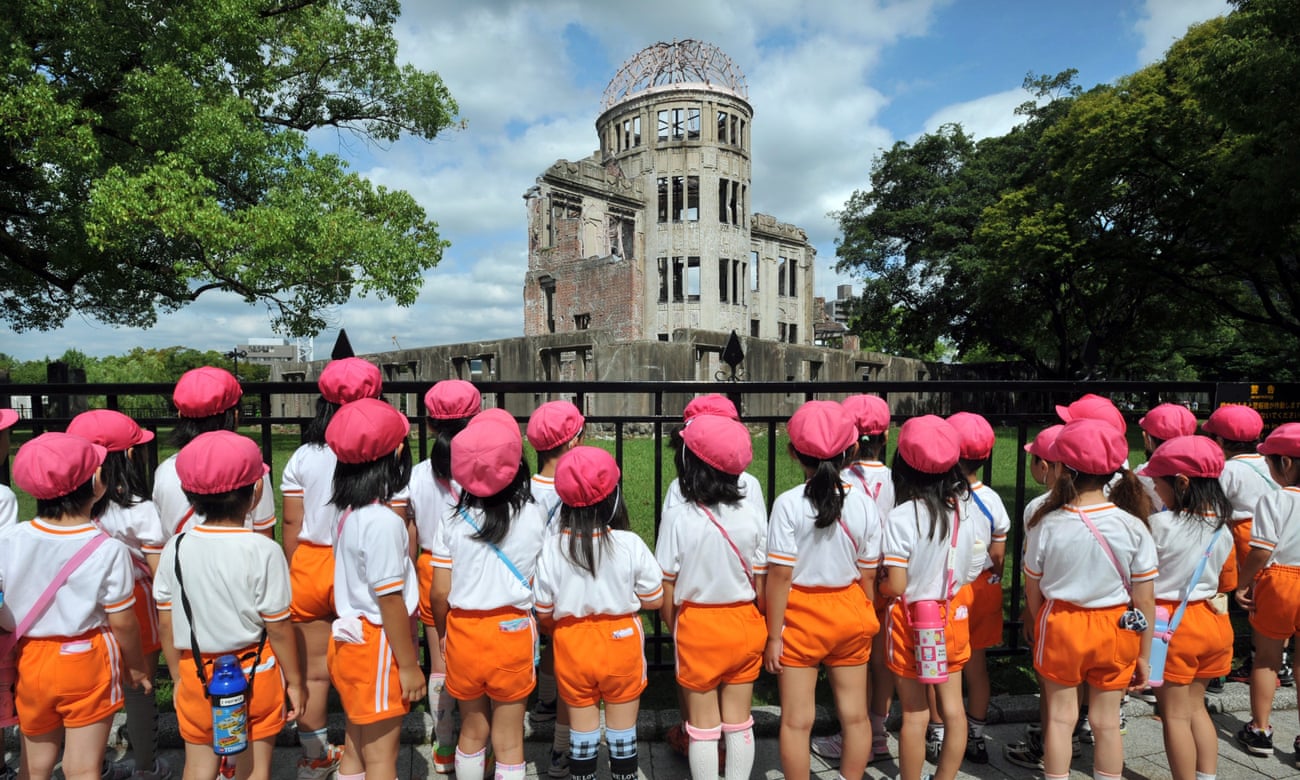On August 6, 1945, Hiroshima became known to the world for this unenviable distinction. The destructive power of the atom bomb was tremendous and obliterated nearly everything within a two kilometer radius. That marks the end of Second World War. Hiroshima, the principal city of Chugoku Region in Japan with time becomes an aspiration to all as great efforts were taken to reconstruct.
Hiroshima Day is observed every year on August 6 to commemorate the atomic bombing in 1945. The bombings killed more than 200,000 people in just seconds and injured thousands more. It was 70 years ago this week the United States dropped an atom bomb on Hiroshima. The bombing annihilated a large swath of the city, including school, hospital, where more than 80% of children died were between 6 and 11 years old. Many monuments and historical sites were destroyed, but with time, reconstruction made these monuments lively and becomes one of the top visited sites in Japan.
Here are some of the top visited sites in Hiroshima:
Hiroshima Castle
Hiroshima Castle is a good example of a Japanese castle built on a plain in the center of a city as opposed to hilltop and mountaintop castles. Its main keep is five stories tall, and its grounds are surrounded by a moat. Also within the castle’s precincts are a shrine, some ruins and a few reconstructed buildings of the Ninomaru (second circle of defense). Hiroshima developed as a castle town, whereby the castle was both the physical and economical center of the city. Built-in 1589 by the powerful feudal lord Mori Terumoto, Hiroshima Castle was an important seat of power in western Japan. While it was spared the demolishment that many other castles met during the Meiji Period, like the rest of the city, Hiroshima Castle was destroyed by the atomic bomb in 1945.
Shukkeien Garden
Shukkeien can be translated into English as “shrunken-scenery garden“, which is also a good description of the garden itself. Valleys, mountains and forests are represented in miniature in the garden’s landscapes. Through careful cultivation of the land and vegetation, the garden mimics a variety of natural formations and scenic views.
Shukkeien has a long history dating back to 1620, just after the completion of Hiroshima Castle. The garden displays many features of the traditional aesthetics of Japanese gardens. Around the garden’s main pond there are a number of tea houses which offer visitors ideal views of the surrounding scenery. The entire garden is connected by a path which winds around the pond at the center of the garden. The path passes through all of Shukkeien’s various miniaturized sceneries. Following this path around the garden is the best way to enjoy Shukkeien.
Peace Memorial Park
Hiroshima’s Peace Memorial Park (Heiwa Kinen Kōen) is one of the most prominent features of the city. Even visitors not looking for it will likely stumble upon the large park of over 120,000 square meters. Its trees, lawns, and walking paths are in stark contrast to the surrounding downtown area. Before the bomb, the area of what is now the Peace Park was the political and commercial heart of the city. For this reason, it was chosen as the pilot’s target. Four years to the day after the bomb was dropped, it was decided that the area would not be redeveloped but instead devoted to peace memorial facilities.
Mazda Museum
The Mazda Motor Corporation in 1920 still retains its corporate headquarters in the city of its origins. In addition to the headquarters, Mazda owns a large plot of coastal land which accommodates research and development laboratories, factories, and shipping facilities. The company museum and part of a factory are made available for public viewing.
Like Toyota to Nagoya, Mazda plays a large role in Hiroshima’s economy. Although Mazda is not as large as Toyota, it still produces over a million cars a year and is an innovative player in the Japanese auto industry. For instance, in 1991 Mazda became the first Japanese company to win the Le Mans Grand Prix.
Hiroshima has a bustling downtown area, the main feature of which is Hondori Street, a pedestrian arcade that is closed to traffic and lined with shops and restaurants. It starts near the Peace Park and stretches east about half a kilometer. Running parallel to Hondori is Aioidori (Aioi Street), the main street used by cars and trams. Along Aioi Street stand a few large department stores where more shopping can be found.
While in the downtown area, visitors to Hiroshima may want to take the opportunity to try Hiroshima’s most famous specialty: Hiroshima-style okonomiyaki. Many restaurants along both Hondori and Aioi streets offer the local specialty, but the surest place to find it is in Okonomimura.
Usually translated as Okonomiyaki Village, Okonomimura is a small area just south of the eastern end of Hondori. As its name implies, it is devoted to okonomiyaki. Okonomimura has many different restaurants to choose from and is a convenient place in the downtown area to take a break and grab a bite.

